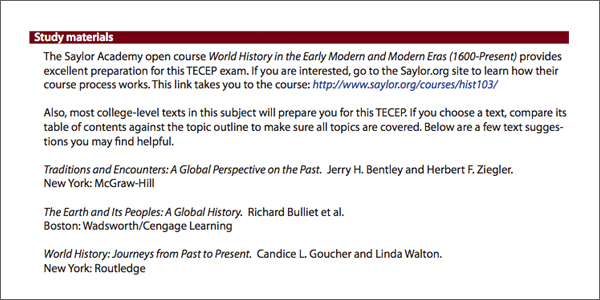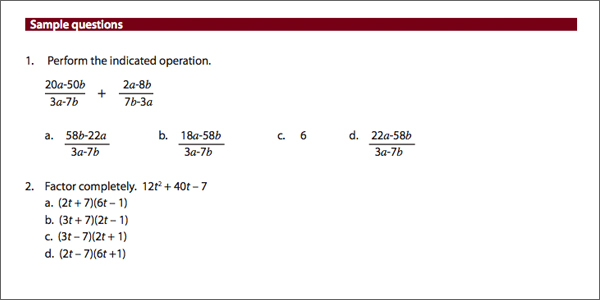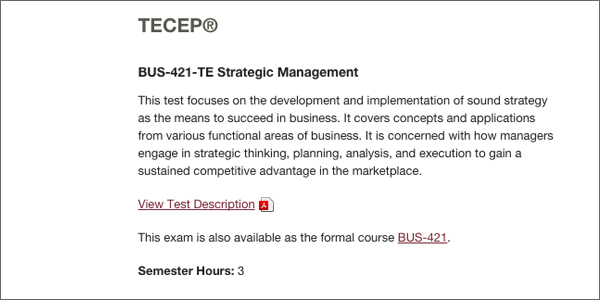Many students think that reading a textbook from cover to cover will prepare them to take a TECEP® Exam. On the other hand, sometimes I hear from students that simply just are not sure how to prepare for the test. Wherever you fall on this scale, there is one crucial resource that can help you prepare and pass. And every TECEP® has its own in the form of the test description.
Unlike an online course, TECEP® exams do not have mentors to guide your learning. So if you are going to study effectively, you need to figure out how to get the most value out of your time. The TECEP® test description explains how to do just that. This guide is where you will find sample questions (including textbook suggestions for additional sample questions) and review materials, as well as what to expect on the test.
Ultimately, the test description can tell you a lot about the exam. In fact, more than you may realize. You just have to know how to read it. So after you browse the list of TECEP® exams and find a subject in which you have some prior knowledge or experience, here’s how to read the test description and study effectively to get the college credit you deserve.
Topics On the Test and Their Approximate Distribution

TECEP® test descriptions are created by a team of the University’s assessment specialists and subject matter experts. They analyze what key concepts are studied in a typical course in that subject, and the best way for students to demonstrate that knowledge. The answers determine what is included in the test description, and guide the development of the actual exam. Every exam question will correspond to one of the topics described in the test description, and how many questions of that topic will be on the exam. From here, create a study plan that details how much time you may want to devote to each concept.
Test Format, Passing Score and Time Limit

TECEP® exams are similar to other credit-by-exam programs (like CLEP® or DSST®), and are graded on a pass/fail basis. By passing, you receive college credit.
This section of the test description will explain the administration of the exam in greater detail. Most tests have multiple-choice questions and some have short essay questions. How many of these questions, as well as the minimum score you need to pass, are explained in the beginning of every test description. The time limit is also indicated for each exam, and it is possible to finish earlier than expected. However, plan your schedule to allow for the full testing time.
Study Materials

You won’t be given a list of concepts to search and identify on your own; the test description will list the textbooks you’ll need to prepare, including the sources upon which the test questions are based. Often, additional study materials, including links to free and open resources available online, is also listed to help improve your understanding of a difficult concept.
Sometimes, there are also materials that you can use during your testing session. For example, the Federal Income Taxation TECEP® recommends you bring a current tax guide to the exam. Meanwhile, you may feel lost without a scientific calculator if you take the College Algebra TECEP®. Read the test description carefully so you do not miss a book or tool that may mean all the difference between passing and failing.
Sample Questions

There may be any number of sample questions listed in the test description, but these questions are similar to the ones on the actual test. Practice these questions in a simulation exam environment (translation: a quiet and distraction-free area). The answers to the sample questions can be found at the bottom of every guide.
Formal Course Equivalent

Every TECEP® exam can be taken in place of a formal course. When you select an exam from the list, the description will indicate which Thomas Edison State University course it is equivalent to.
Every course is given a unique identifier number, called the course code, beginning with three letters that represent the subject and course requirement to which it belongs. The three numbers that follow the code signify the course level. Generally, course levels (lower, upper and graduate) correlate with the difficulty of the course:
- 100-299 lower division (undergraduate)
- 300-499 upper division (undergraduate)
- 500-899 graduate courses
So to determine which exams may apply to your degree program and for what requirement, use this listing to find the subject description matching the course code you want to find. For example, if you are looking to fulfill a communications requirement, you will want to look at the exams that begin with the COM code. However, you should still consult your advisor to plan your degree requirements.

Written by Elizabeth Gehrig
